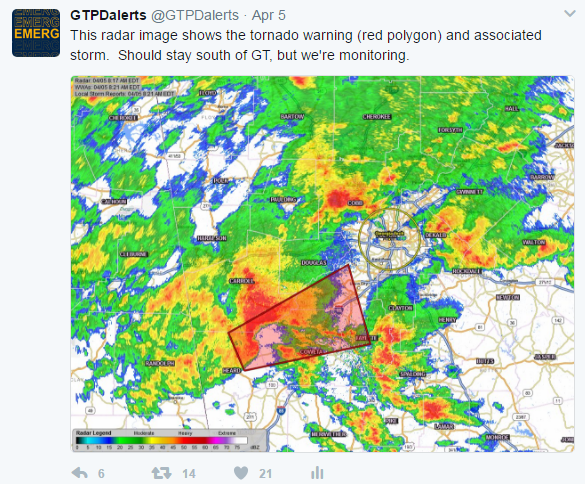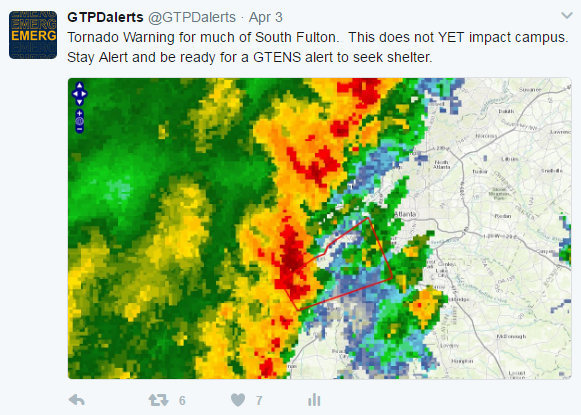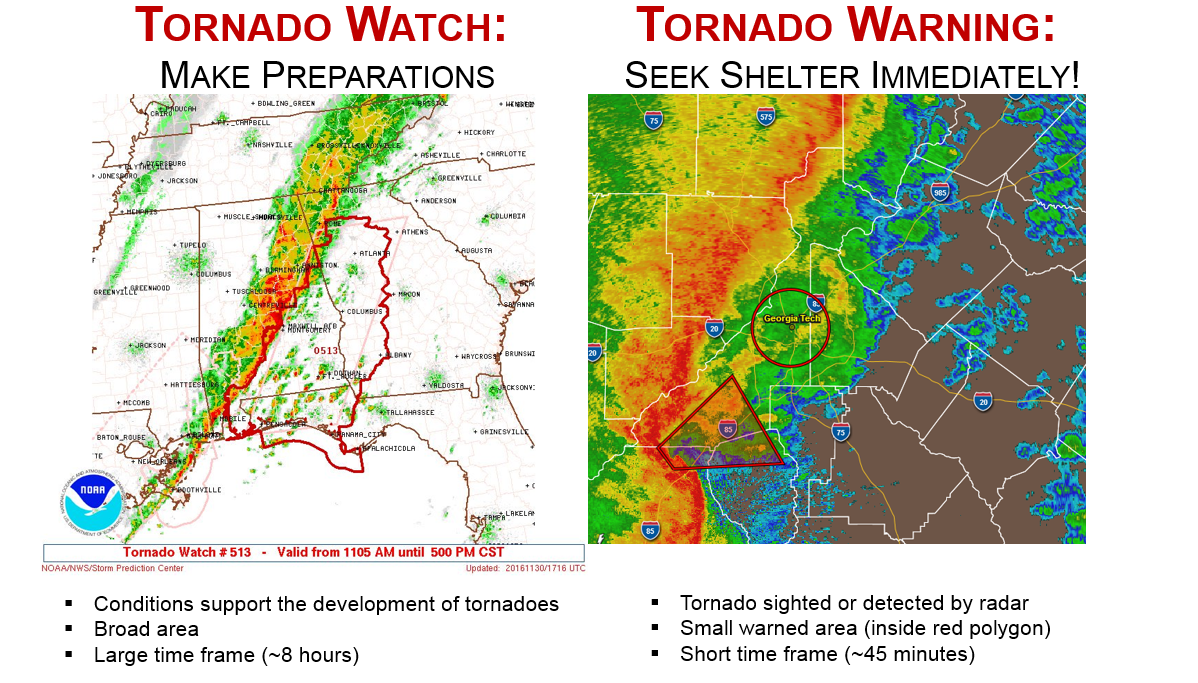A common hazard in the Atlanta Metro area is severe weather, which is possible throughout the year. The National Weather Service (NWS) categorizes storms as severe when they produce hail greater than 1" in diameter, winds in excess of 58 mph, or tornadoes. Generally, when we refer to severe weather, we refer to storms that meet one or more of those thresholds. In a broad sense, though, weather can be hazardous in a variety of ways: flooding, extreme temperatures, winter weather, and lightning. This section will specifically look at severe weather as defined by the NWS.
Tornado Watch vs. Tornado Warning
We often are asked the difference between a Tornado Watch and a Tornado Warning. The graphic below summarizes the primary differences, but the main difference is your actions from each. A tornado warning means that a small, defined area is immediately in danger from a sighted or suspected tornado. This means you must take action immediately when a tornado warning is issued:
- Seek shelter immediately in an interior room, away from exterior doors and windows.
- Lowest levels of buildings are best.
- Many buildings have identified severe weather shelter areas; use these for shelter.
A tornado watch is often issued well in advance or a storm system that may produce tornadoes. Use a tornado watch to prepare:
- Adjust your schedule so you aren't driving through severe weather.
- Adjust events so that patrons are not in danger in an unprotected area.
- Review plans and procedures, etc.
Weather Alerting
Tornado Warnings
The Office of Emergency Management regularly communicates weather hazards to the Georgia Tech community. We reserve the use of GTENS for when the campus community needs to take immediate action for an imminent threat. Typically, this means that only when a Tornado Warning is issued that includes the Georgia Tech campus do we initiate a GTENS alert. To be clear, the NWS uses warning polygons that may overlay multiple cities, counties and other political subdivisions. As such, there may be parts of Fulton County or the City of Atlanta that are under a tornado warning, but not Georgia Tech. OEM only alerts the campus via GTENS when a tornado warning overlays the campus.
Lightning Alerts
The Office of Emergency Management has set up automatic lightning alerts for the campus when lightning is detected within 8 miles of the campus. Visit this link for more information about lightning procedures and how to sign up for alerts.
Twitter @GTPDalerts
The Office of Emergency Management uses X, formerly twitter, via @gtpdalerts to communicate weather hazards to campus. This will include anything that is sent out over GTENS, like a Tornado Warning, or less serious situations like Severe Thunderstorm Warnings, Flash Flood Warnings, and Watches. Additionally, we use X to provide regular updates on storms and storm systems.
Examples:


